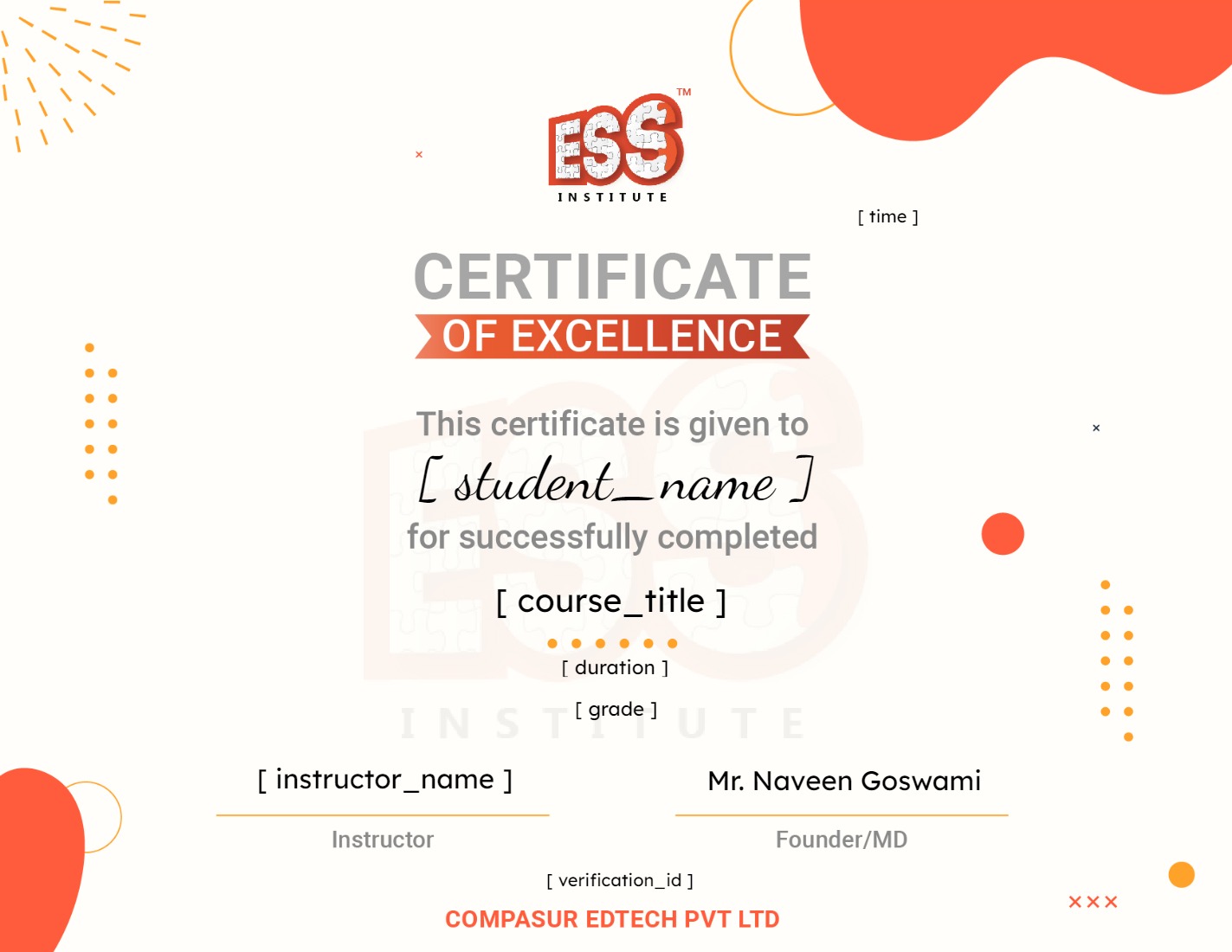About Course
Are you curious about how software is built from scratch? Ever wondered what’s behind the apps, websites, and games we use every day? It all starts with programming—and C are one of the most powerful languages to begin your journey.
At ESS Institute, we’ve designed this online C course to take you from zero to confident coder. Whether you’re a student, a beginner exploring tech, or someone looking to sharpen their logic and programming skills, this course is your go to guide
We focus on syntax, problem-solving mindset, writing clean and efficient code, and understanding the “why” behind every concept. With clear explanations, real-world examples, and hands-on practice, you’ll slowly start thinking like a programmer.
By the end of the course, you’ll not only understand how C work—you’ll be able to build programs, debug code, and approach challenges with confidence. Plus, the logical thinking you develop here will benefit you in any future tech path—whether it’s data structures, web development, or machine learning.
Let’s build the foundation right. One concept, one line of code at a time
Course Content
Introduction of C
-
Introduction
03:05 -
Module
04:22
Introduction to Programming Language
Operators & Expressions
Conditional Operator
Control Statement
Arrays and String
Function and Recursion
Structure, Union and File handling
Pointer
Earn a certificate
Add this certificate to your resume to demonstrate your skills & increase your chances of getting noticed.

Student Ratings & Reviews


